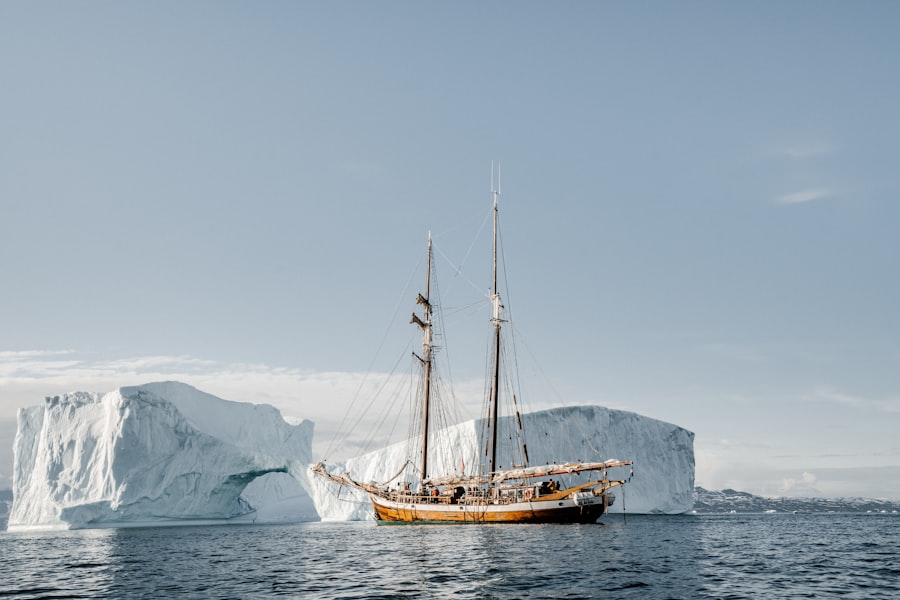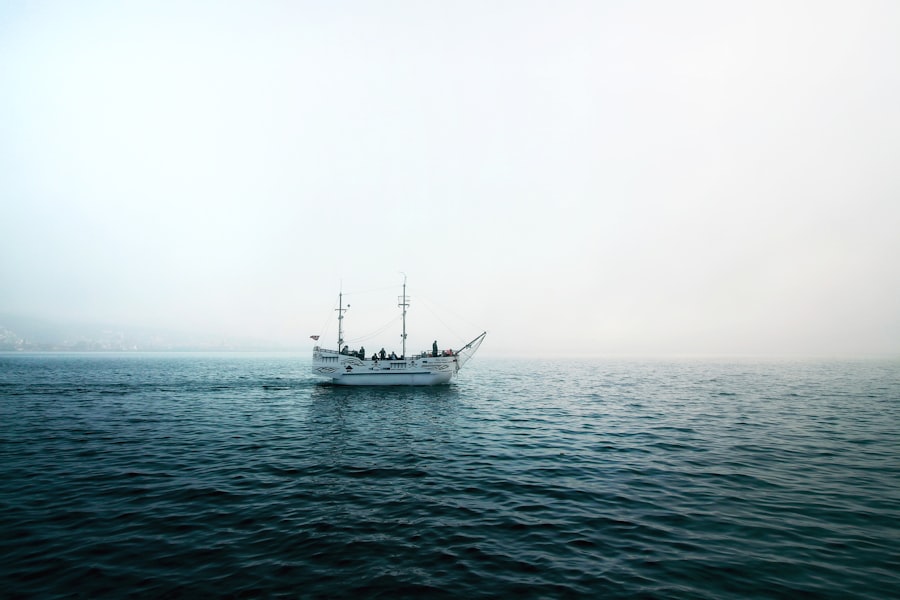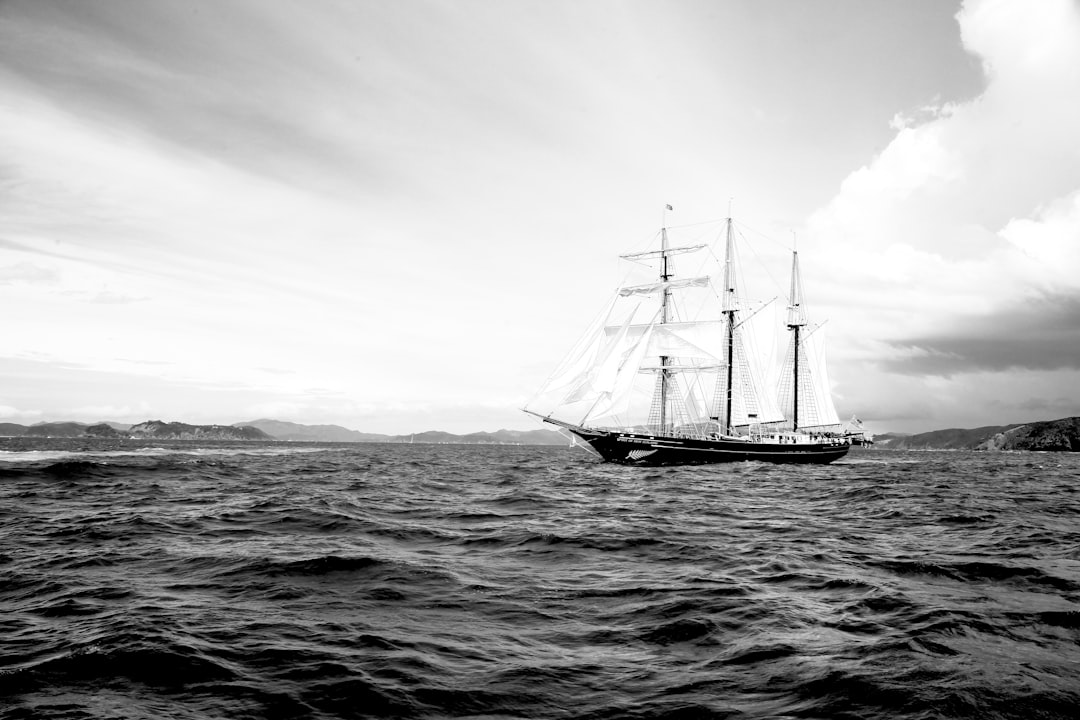The Drake Passage, a body of water situated between the southern tip of South America and Antarctica, is renowned for its tumultuous seas and unpredictable weather. Named after the English explorer Sir Francis Drake, who navigated these waters in the late 16th century, the passage serves as a critical maritime route for vessels traveling to and from the Antarctic region. Stretching approximately 600 miles, it is often regarded as one of the most challenging stretches of ocean in the world.
The passage not only connects the Atlantic and Pacific Oceans but also plays a significant role in global oceanic currents, making it a vital area for marine ecology. Sailing through the Drake Passage is an adventure that attracts many seafarers and explorers, drawn by the allure of its wild beauty and the promise of encountering unique wildlife. However, this journey is not for the faint-hearted.
The passage is notorious for its rough seas, strong winds, and rapidly changing weather conditions, which can turn a calm day into a stormy ordeal in a matter of hours. For those who dare to traverse these waters, the Drake Passage offers both challenges and rewards, making it a rite of passage for many adventurers.
Key Takeaways
- The Drake Passage is a treacherous body of water located between South America’s Cape Horn and the South Shetland Islands of Antarctica.
- Sailing through the Drake Passage presents challenges such as strong winds, rough seas, and potential icebergs, making it one of the most difficult maritime routes in the world.
- Weather conditions in the Drake Passage are unpredictable and can change rapidly, with frequent storms and high waves posing significant risks to sailors.
- Proper preparation for a journey through the Drake Passage includes obtaining necessary gear, undergoing physical training, and mentally preparing for the demanding conditions.
- Choosing the right vessel for sailing through the Drake Passage is crucial, with considerations such as size, stability, and experienced crew playing a key role in ensuring a safe and successful journey.
Understanding the challenges of sailing through the Drake Passage
Navigating the Drake Passage presents a myriad of challenges that can test even the most seasoned sailors. One of the primary difficulties lies in the unpredictable nature of the sea. The convergence of the Atlantic and Pacific Oceans creates a unique environment where currents collide, resulting in turbulent waters that can be both daunting and dangerous.
Sailors must be prepared for sudden changes in conditions, including steep waves that can reach heights of up to 30 feet. This unpredictability requires not only skill but also a deep understanding of maritime navigation. Moreover, the psychological aspect of sailing through the Drake Passage cannot be overlooked.
The isolation and vastness of the ocean can evoke feelings of vulnerability among sailors. The passage is often described as a place where one can feel both exhilarated and intimidated by nature’s raw power. This duality can lead to heightened anxiety, especially for those who are less experienced.
Therefore, mental preparation is just as crucial as physical readiness when embarking on this journey.
Weather conditions in the Drake Passage

The weather in the Drake Passage is notoriously volatile, characterized by rapid fluctuations that can change from sunny skies to fierce storms within hours. The region experiences strong winds, often exceeding 40 knots, which can create challenging sailing conditions. These winds are primarily driven by the unique geography of the area, where land masses funnel air currents and create turbulence.
Sailors must remain vigilant and adaptable, as weather forecasts can quickly become outdated in this dynamic environment. Temperature variations also play a significant role in the weather patterns of the Drake Passage. The waters are cold, with temperatures often hovering around freezing, particularly during winter months.
This cold water contributes to the formation of fog and low visibility conditions, further complicating navigation. Sailors must equip themselves with appropriate gear to combat the chill while remaining alert to changing weather patterns that could impact their journey.
Tips for preparing for a journey through the Drake Passage
| Preparation Tips for Drake Passage Journey |
|---|
| Check weather and sea conditions |
| Pack motion sickness medication |
| Dress in layers for changing temperatures |
| Secure loose items in your cabin |
| Attend safety briefing and follow crew instructions |
Preparation is key when planning a journey through the Drake Passage. First and foremost, sailors should conduct thorough research on the passage’s conditions and potential hazards. Understanding seasonal variations can help in selecting the best time to sail.
Typically, the summer months from November to March offer more favorable weather conditions, with calmer seas and increased wildlife activity. However, even during these months, sailors should be prepared for sudden changes. In addition to researching weather patterns, it is essential to ensure that all equipment and supplies are in top condition before setting sail.
This includes checking safety gear such as life jackets, flares, and emergency beacons. Furthermore, having a well-stocked supply of food and water is crucial for long voyages across this remote stretch of ocean.
Choosing the right vessel for sailing through the Drake Passage
Selecting an appropriate vessel is one of the most critical decisions when preparing to sail through the Drake Passage. The ideal boat should be sturdy and capable of handling rough seas. Many experienced sailors recommend choosing a vessel designed for offshore sailing, equipped with features such as a deep keel and a strong hull to withstand heavy waves.
Additionally, having a reliable engine is essential for maneuvering in challenging conditions or when seeking shelter from storms. Size also plays a significant role in vessel selection. While larger boats may offer more stability in turbulent waters, they can also be more challenging to handle in tight spaces or during docking maneuvers.
Conversely, smaller vessels may provide greater agility but could struggle against powerful waves. Ultimately, sailors must weigh their experience level against their vessel choice to ensure they are adequately equipped for the challenges ahead.
Safety measures to consider when navigating the Drake Passage

Safety should always be a top priority when navigating the Drake Passage. One of the most important measures is to have a comprehensive safety plan in place before setting sail. This plan should include emergency procedures for various scenarios, such as man overboard situations or equipment failure.
Additionally, all crew members should be familiar with safety protocols and know how to operate safety equipment effectively. Communication is another vital aspect of safety during this journey. Sailors should ensure they have reliable communication devices on board, such as satellite phones or VHF radios, to stay connected with other vessels or emergency services if needed.
Regularly checking in with a support team on land can provide an additional layer of security, allowing someone to monitor progress and respond quickly if any issues arise.
Navigation techniques for sailing through the Drake Passage
Effective navigation techniques are essential for successfully sailing through the Drake Passage. Traditional methods such as using nautical charts and compasses remain invaluable tools for sailors venturing into these waters. However, modern technology has also enhanced navigation capabilities significantly.
GPS systems provide real-time positioning data that can help sailors plot their course more accurately. In addition to relying on technology, sailors should develop strong observational skills to assess changing conditions at sea. This includes monitoring wave patterns, wind direction, and cloud formations that may indicate impending weather changes.
Understanding how to read these natural signs can help sailors make informed decisions about their route and timing while navigating this challenging passage.
Wildlife encounters in the Drake Passage
One of the most enchanting aspects of sailing through the Drake Passage is the opportunity to encounter diverse wildlife that inhabits these waters. The region is home to various species of seabirds, including albatrosses and petrels, which can often be seen gliding gracefully above the waves. These majestic birds are not only a sight to behold but also serve as indicators of changing weather patterns.
Marine life thrives in the nutrient-rich waters of the Drake Passage as well. Sailors may have the chance to spot seals basking on ice floes or even whales breaching in the distance. Species such as humpback whales and orcas are known to frequent these waters during certain times of the year.
For many sailors, these wildlife encounters are among the most memorable aspects of their journey, providing a profound connection to nature’s beauty.
Historical significance of the Drake Passage
The historical significance of the Drake Passage cannot be overstated. It has long been a critical route for explorers and traders seeking access to Antarctica and beyond. Sir Francis Drake’s expedition in 1578 marked one of the first recorded passages through these treacherous waters, paving the way for future exploration and maritime trade routes.
Throughout history, many notable figures have traversed the Drake Passage, each contributing to its rich narrative. The passage has served as both a gateway to discovery and a formidable barrier that has challenged countless adventurers over centuries. Today, it remains an iconic symbol of exploration and resilience against nature’s forces.
Personal experiences of sailing through the Drake Passage
Sailing through the Drake Passage is an experience that leaves an indelible mark on those who undertake it. Many sailors recount tales of both awe-inspiring beauty and harrowing challenges faced during their journeys. For some, navigating these waters becomes a rite of passage—a test of skill and endurance that fosters camaraderie among crew members.
Personal stories often highlight moments of triumph amidst adversity—such as successfully weathering a storm or spotting wildlife after days at sea. These experiences create lasting memories that resonate long after returning home.
The rewards of successfully navigating the Drake Passage
Successfully navigating the Drake Passage offers rewards that extend far beyond reaching one’s destination. The sense of accomplishment that comes from overcoming its challenges fosters personal growth and resilience among sailors. Each journey through these waters serves as a reminder of nature’s power and beauty—a humbling experience that instills respect for both the ocean and its unpredictable temperament.
Moreover, those who brave this passage often find themselves enriched by their encounters with wildlife and breathtaking landscapes unique to this region. The memories forged during such adventures become cherished stories shared among fellow sailors and adventurers alike. Ultimately, while sailing through the Drake Passage may be fraught with challenges, it also promises unparalleled rewards—an experience that resonates deeply within those who dare to embark on this extraordinary journey.
Sailing the Drake Passage is a thrilling adventure that challenges even the most seasoned sailors with its unpredictable weather and tumultuous seas. For those interested in learning more about the geographical and historical significance of this treacherous route, you might find the article on MyGeoQuest’s sample page particularly insightful. It delves into the unique aspects of the Drake Passage and offers a broader understanding of its place in maritime history.
WATCH NOW! Drake Passage: Earth’s Deadliest Waters Revealed
FAQs
What is the Drake Passage?
The Drake Passage is the body of water between the southern tip of South America and the northern tip of the Antarctic Peninsula. It is known for its rough seas and challenging sailing conditions.
Can you sail the Drake Passage?
Yes, it is possible to sail the Drake Passage, but it is considered one of the most challenging and dangerous sailing routes in the world due to its strong winds, large waves, and unpredictable weather.
What are the sailing conditions like in the Drake Passage?
The sailing conditions in the Drake Passage are characterized by strong winds, rough seas, and rapidly changing weather. The area is notorious for its fierce storms and high waves, making it a challenging and potentially dangerous route for sailors.
Are there any risks associated with sailing the Drake Passage?
Yes, there are significant risks associated with sailing the Drake Passage, including the potential for extreme weather conditions, rough seas, and the presence of icebergs. It is important for sailors to be well-prepared and experienced before attempting to navigate this treacherous stretch of water.
What type of vessels are suitable for sailing the Drake Passage?
Sailing the Drake Passage requires a sturdy and well-equipped vessel, preferably one that is designed for ocean crossings and capable of handling rough seas and strong winds. Larger, more stable vessels such as expedition cruise ships or sailboats with experienced crews are typically used for navigating the Drake Passage.
